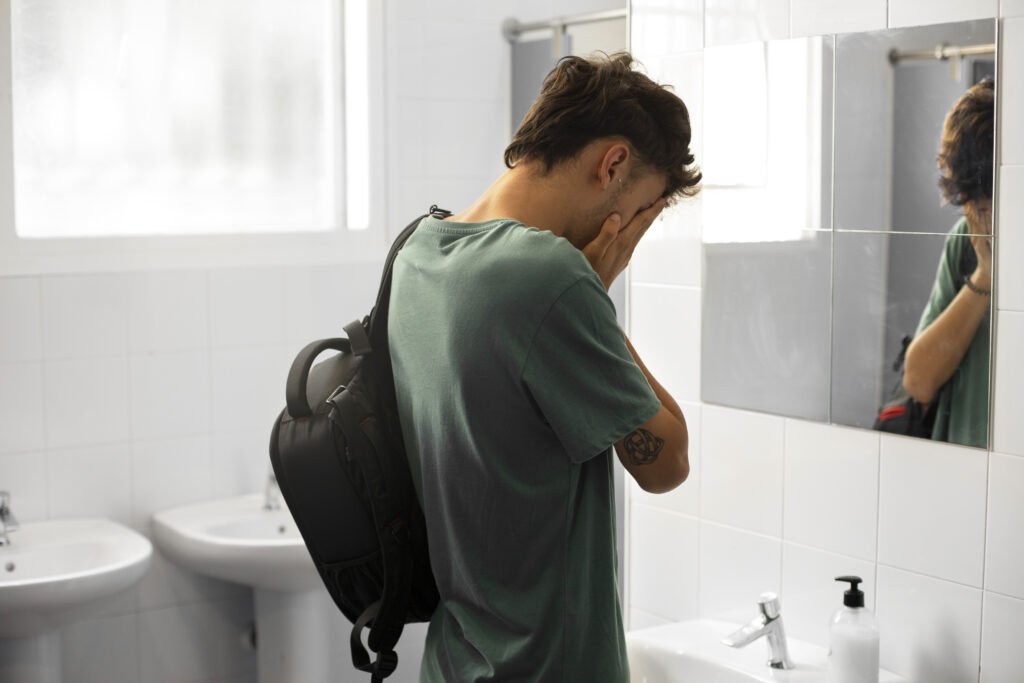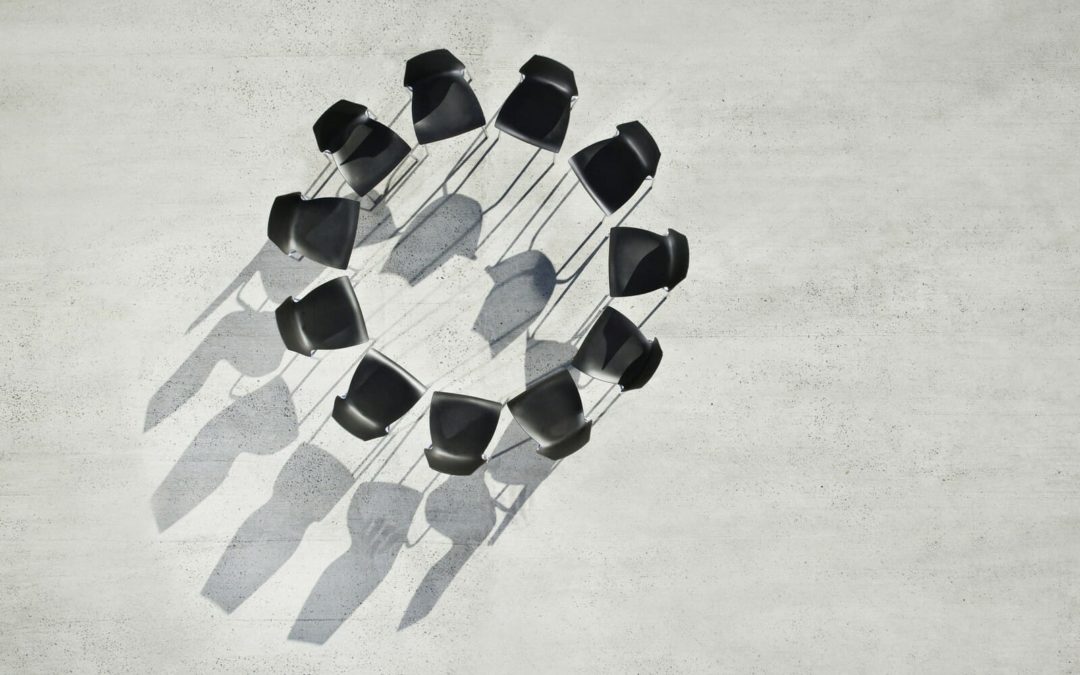Table of Contents

Updated and Fact-checked July 2024 by: Mike Carter, LCDC
Update list:
- Updated risky behavior based on new data regarding how new generations are changing the way they behave.
- Updated tips for parents based on new approaches.
- Changed the section regarding teenager’s context to make it more accurate
The teen years can be difficult, filled with mood swings and heightened emotions. Teens are in a sensitive stage of development, with rapid changes taking place in the body and brain that can cause discomfort and extra stress. This period of life is an evolving process where unpredictability is the norm rather than exception.
This stage is also where teens begin to explore their independence and identities. When paired with hormones, school stress and peer pressure—it can sometimes cause problematic teenage behavior.
It’s normal for teenagers to get moody, impulsive, or challenge authority as they gain their independence. However, if your teen is struggling with a mental health problem or behavioral disorder, they may show red flags for parents to be aware of.
Understanding Teens and Their Context
Surging hormones, rewiring brains, and identity exploration are all markers of the teen years.
Recognizing the patterns of normal teenage behavior is key for parents to support them through the transformative years.
At the same time, it’s vital to maintain a watchful eye for behaviors that stray from the expected. When does the search for autonomy become risky defiance? At what point do mood swings suggest emotional turmoil that requires intervention?
Risky behaviors that go above and beyond what is typical for a teenager can affect their health, safety, happiness, and who they become in adulthood.

Normal Behavior Traits in Teens
Before understanding red flags in your teens, it is important to be mindful of what normal teenage behavior looks like. Teens are known to be moody, challenge authority and sometimes exhibit behaviors that parents may think are red flags—but are simply normal for teens.
Mood Swings and Emotional Fluctuations
Hormonal changes during adolescence can create a rollercoaster of emotions, manifesting as mood swings and intense feelings. While these fluctuations can be challenging to deal with, they’re a normal part of teenage development. Encouraging teens to express themselves and communicate their feelings can promote emotional health.
Seeking Independence
As teenagers grow, they naturally seek to establish their identities and gain autonomy. Sometimes this can mean challenging authority. While they push for this independence, adults need to strike a balance—offering guidance while allowing them the space to learn from their experiences.
Social Peer Influence
Peers play a large role in shaping teens’ behaviors and preferences. While positive peer influence can support development, it is important to monitor for unhealthy group dynamics that may lead to risky teenage behavior.

Red Flags: Recognizing Concerning Behavior
Understanding when risky teenage behavior goes above and beyond what is normal is helpful to prevent them from becoming self-destructive. Here are 10 red flags that parents, guardians, and educators should be aware of.
Isolation & Withdrawal
While it’s typical for teens to want privacy, extreme isolation is when a teenager who once enjoyed social gatherings now spends all their time alone, often in their room and avoiding others. This retreat from social life shouldn’t be brushed off as just a phase, and can sometimes indicate a sign of a mental health problem such as depression.
Sudden Changes in Academic Performance
If your teen was once a straight A student and is suddenly failing assignments, it may be a clear warning signal. When the teen who used to light up discussing their classes now shrugs at the mention of school, it’s time to dig deeper. This could be due to a variety of factors, from undiagnosed learning disabilities, bullying, social issues, or loss of interest due to other underlying emotional concerns.
Close cooperation with educators is important here. School counselors can share observations from the school environment, while teachers might provide insights into changes in classroom behavior. Creating a supportive network around the teen can help identify the roots of academic decline and support them.
Substance Use & Abuse
Experimenting with drugs or alcohol can be common in the teenage years, but there are signs that indicate potential substance abuse. If you find your teen frequently smells of smoke or alcohol, has red or glazed eyes, or you discover paraphernalia in their room, these are warning signs.
Behaviors are also telling—if they’re suddenly secretive, changing their friend group rapidly, asking for money without an explanation, or showing a lack of interest in previously enjoyed activities, these could point to substance use.
Early intervention is essential to supporting teens to prevent falling deeper into drug or alcohol abuse. Educating teenagers about the risks and consequences of substance abuse and having open discussions in the home can help mitigate risks.
Drastic Personality Shifts
If a typically outgoing and confident teen become withdrawn, or if a generally reserved teen starts acting out in aggression, these personality changes can be a signal that something is wrong.
Changes in Sleep Patterns
Teens are sometimes known for sleeping until noon on weekends and experience changes in sleep due to development, but excessive sleepiness or insomnia can be a red flag. Sleep problems can be linked to mental health problems such as depression, anxiety, or substance abuse.
Risky Behaviors
Sometimes teens like to take risks and tend to be impulsive. However, an increase in reckless activities that pose significant danger should be addressed.
This could include reckless driving, unsafe sexual behavior, drug use or illegal thrill-seeking. These behaviors can stem from a desire to escape from emotional pain, peer pressure, or a lack of understanding of the consequences.
Decline in Personal Hygiene
Visible neglect for hygiene can indicate signs of underlying mental health problems such as depression or emotional distress. This could include not showering, brushing teeth, or changing clothes.
Loss of Interest
A sudden loss of interest in hobbies or activities that your teen was previously passionate about can be a warning sign something is wrong. This could indicate depression, social issues such as bullying, or other emotional problems.
Frequent Trouble at School or With the Law
A pattern of detentions, suspensions, or encounters with law enforcement suggests that a teenager is engaging in behavior that could have serious consequences and may be a manifestation of underlying issues.
Changes in Eating Habits
Drastic changes in eating patterns, whether it’s eating too much or too little, can indicate issues such as stress, anxiety, or eating disorders like anorexia or bulimia.

Supporting Your Teen: Tips for parents
One of these signs on its own might not indicate a problem, however, if your teen is showing multiple red flags or frequent concerning behavior, they may need additional support.
It’s important to approach your teen with sensitivity and understanding, without immediate judgment or confrontation, to keep trust and open communication. Some tips for parents include:
- Active Listening: Listening to your teen and validating their feelings can make it easier for them to open up
- Open Conversation: Create a safe space in your home where your teen feels comfortable to share their thoughts and feelings without fear of judgment. This will build trust for them to come to you in times of distress
- Establish Boundaries: Set up boundaries with your teen during periods of calmness to establish clear rules that helps protect their health and safety
- Get Them Involved: Encourage your teen to get involved with activities that will reduce their stress levels and boost emotional wellness. These could include exercise, sports, art, dance, music, etc
- Model Healthy Habits: Teens often learn by observation and it is important for parents to manage their own stress and model behaviors in the home they want their teens to follow

Seeking Professional Help
If you identify warning signs of self-destructive behavior in your teen, it’s important to reach out for professional mental health support to help find the best plan of treatment.
At Clearfork Academy our team of compassionate, licensed therapists understand the complex nature of troubled teens. Reach out to our Admissions team to learn more.
References
National Institute on Drug Abuse (NIDA). (2021). Principles of Adolescent Substance Use Disorder Treatment: A Research-Based Guide.
National Alliance on Mental Illness. (2021). Mental Health Facts in America.
Journal of Substance Abuse Treatment. (2006). https://www.jsatjournal.com/.
Austin Davis, LPC-S
Founder & CEO
Originally from the Saginaw, Eagle Mountain area, Austin Davis earned a Bachelor of Science in Pastoral Ministry from Lee University in Cleveland, TN and a Master of Arts in Counseling from The Church of God Theological Seminary. He then went on to become a Licensed Professional Counselor-Supervisor in the State of Texas. Austin’s professional history includes both local church ministry and clinical counseling. At a young age, he began serving youth at the local church in various capacities which led to clinical training and education. Austin gained a vast knowledge of mental health disorders while working in state and public mental health hospitals. This is where he was exposed to almost every type of diagnosis and carries this experience into the daily treatment.
Austin’s longtime passion is Clearfork Academy, a christ-centered residential facility focused on mental health and substance abuse. He finds joy and fulfillment working with “difficult” clients that challenge his heart and clinical skill set. It is his hope and desire that each resident that passes through Clearfork Academy will be one step closer to their created design. Austin’s greatest pleasures in life are being a husband to his wife, and a father to his growing children. He serves at his local church by playing guitar, speaking and helping with tech arts. Austin also enjoys being physically active, reading, woodworking, and music.




